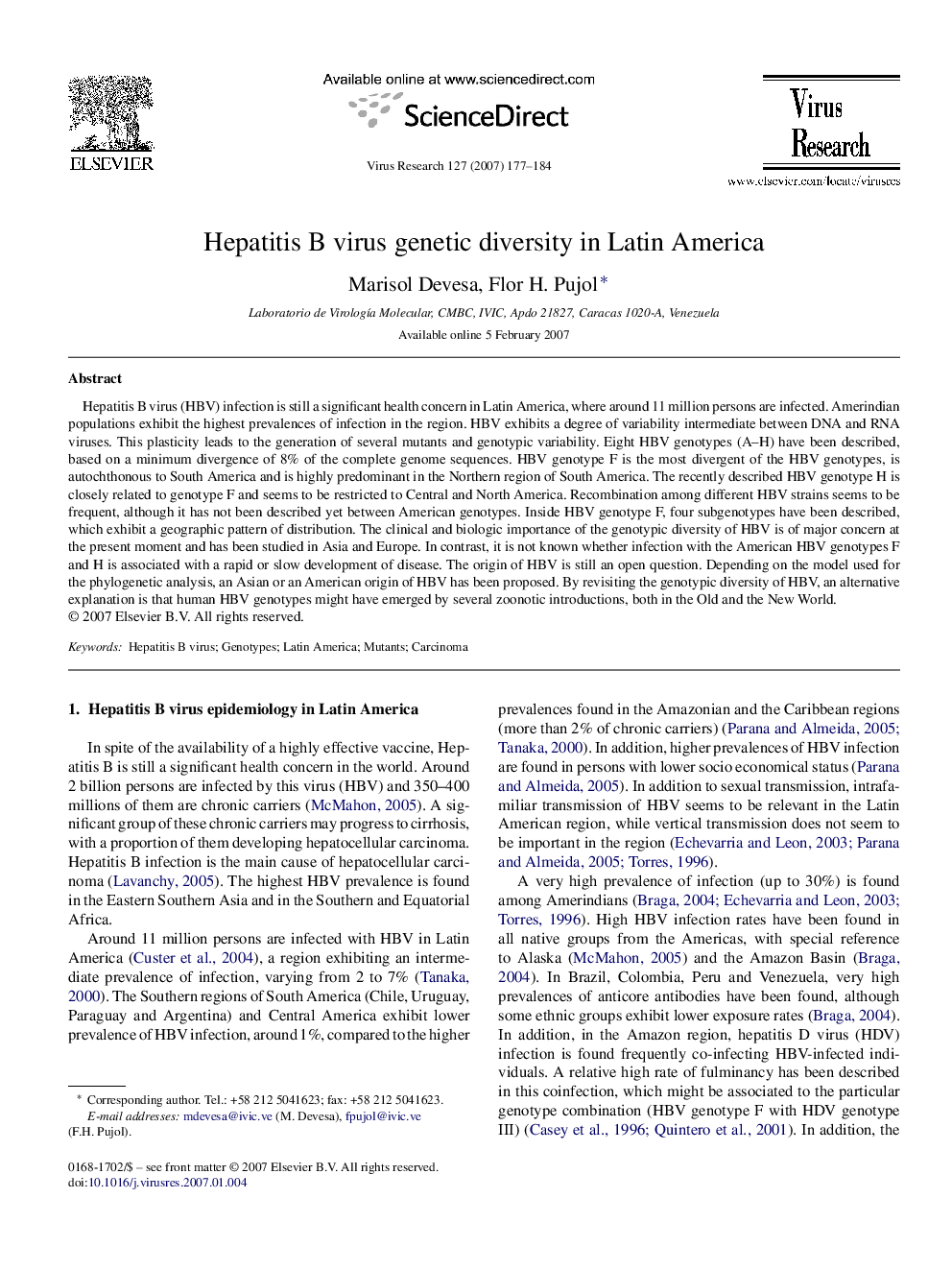| Article ID | Journal | Published Year | Pages | File Type |
|---|---|---|---|---|
| 3430737 | Virus Research | 2007 | 8 Pages |
Hepatitis B virus (HBV) infection is still a significant health concern in Latin America, where around 11 million persons are infected. Amerindian populations exhibit the highest prevalences of infection in the region. HBV exhibits a degree of variability intermediate between DNA and RNA viruses. This plasticity leads to the generation of several mutants and genotypic variability. Eight HBV genotypes (A–H) have been described, based on a minimum divergence of 8% of the complete genome sequences. HBV genotype F is the most divergent of the HBV genotypes, is autochthonous to South America and is highly predominant in the Northern region of South America. The recently described HBV genotype H is closely related to genotype F and seems to be restricted to Central and North America. Recombination among different HBV strains seems to be frequent, although it has not been described yet between American genotypes. Inside HBV genotype F, four subgenotypes have been described, which exhibit a geographic pattern of distribution. The clinical and biologic importance of the genotypic diversity of HBV is of major concern at the present moment and has been studied in Asia and Europe. In contrast, it is not known whether infection with the American HBV genotypes F and H is associated with a rapid or slow development of disease. The origin of HBV is still an open question. Depending on the model used for the phylogenetic analysis, an Asian or an American origin of HBV has been proposed. By revisiting the genotypic diversity of HBV, an alternative explanation is that human HBV genotypes might have emerged by several zoonotic introductions, both in the Old and the New World.
